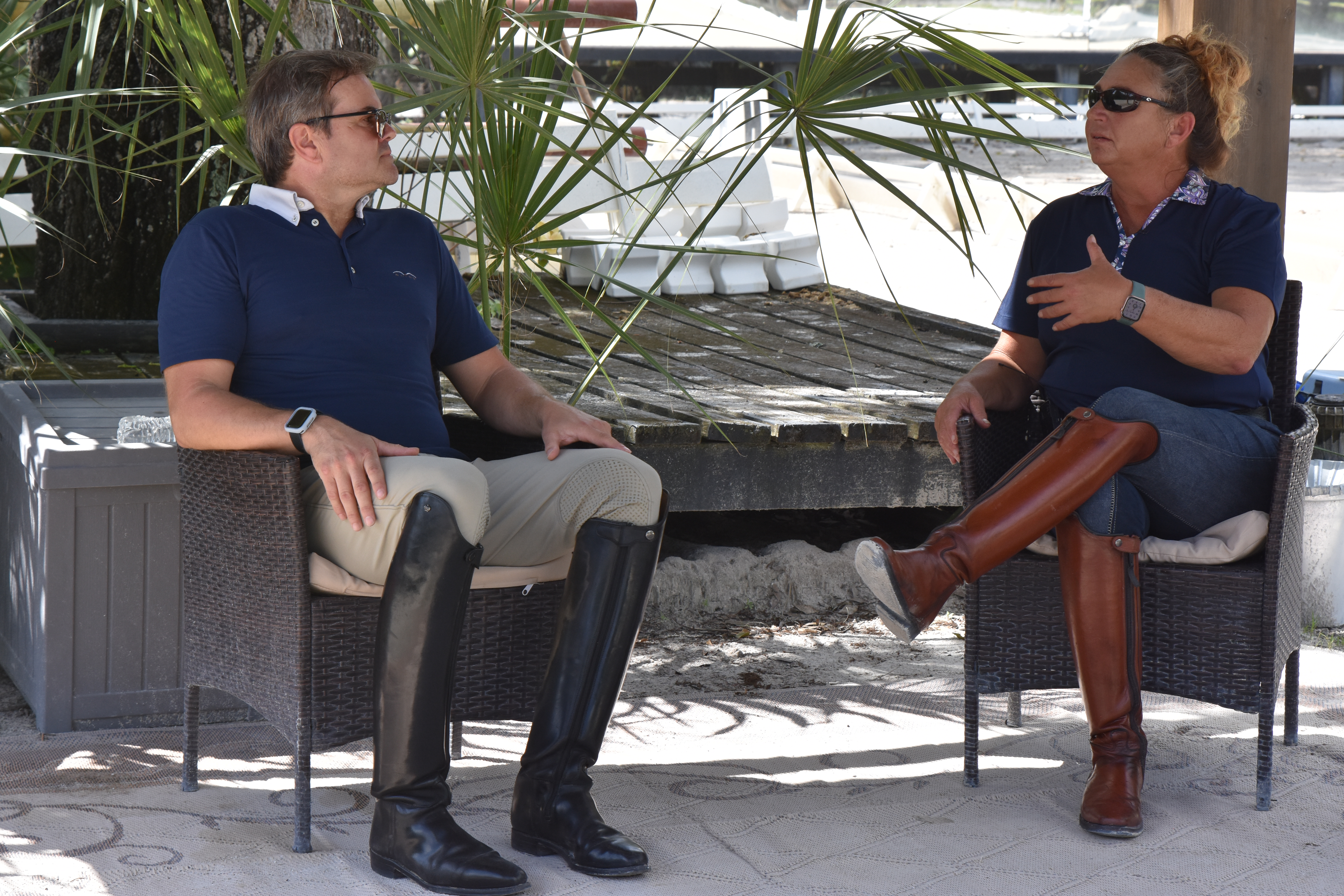Grand Prix trainers Todd Flettrich and Ruth Hogan-Poulsen often work together to merge their teaching and training styles for even more effectiveness. “We have different techniques, and we have different thought processes about how to go about things, but we’re always looking for the same result,” Hogan-Poulsen says. “Todd rides and teaches a lot by feel, which is an incredible talent. I teach a lot of technique. So, often, Todd and I collaborate because he might see something, or he’s drawn to something that I wasn’t or vice versa.

“As a result, with both of our inputs, for our horses and our students, we get the best of both worlds of technique and feel. We often ask each other, ‘What did you think of this and what would you do about that?’”
Here they discuss the four basic driving aids—the leg, the seat, the voice and the whip—and share 10 tips about how you can create a better, independent response from each and why this is important.
- The basis to all riding, not just dressage, is to have a response from all the driving aids.
- The seat and leg are the most important driving aids, but the voice and the whip help make the horse more reactive.
- The driving aids should be isolated independently so the rider expects to keep a light standard and doesn’t nag the horse. If the rider gives an aid but gets no response and she does it louder and louder, eventually the horse just shuts out the extraneous noise.
- The goal is to have a physical and emotional response from the horse that is created from the smallest whisper.
- The rider nagging and the horse not giving a proper response can cause stiffness and resistance.
- Riders who nag their horses sometimes are not well balanced and do not follow the horse’s motion.
- Having the physical ability to be balanced is very important and involves a strong core. That helps align yourself both longitudinally and laterally to be able to go with your horse.
- When you look at quiet, beautiful riders, you see how much their joints are actually moving on the horse. They’re not sitting still. Having that balance, strength and alignment is what allows the horse to move the most beautifully and freely underneath you.
- While the rider needs to be able to get a better response from the horse, she also needs to be strong enough to support her balance and follow the motion.
- The voice cannot be used in a competition arena, but as a tool for training, it’s an important factor. Similarly, at certain levels and competitions, riders are not allowed to use the whip.
The bottom line is that the aid must come from the seat and the leg, but the tools of the voice and whip are good additions to help the rider train the horse to the whisper.

Find More on DTO!
Visit OnDemand.DressageToday.com to review Todd Flettrich’s and Ruth Hogan-Poulsen’s training collection on the driving aids, as well as leg-yield and shoulder-in. Sign up for a 10-day free trial with a subscription.
About Todd Flettrich and Ruth Hogan-Poulsen

Todd Flettrich, based at Cherry Knoll Farm in Wellington, Florida, is a veteran competitor and sought-after trainer at the FEI dressage levels. He is a 2012 Olympic alternate and 2010 World Equestrian Games team member. Ruth Hogan-Poulsen has earned her U.S. Dressage Federation Bronze, Silver and Gold medals and her Freestyle Gold Bar. She splits her time between East Hill Farm in Plainfield, Vermont, and Bespoke Farm in Loxahatchee, Florida. Ruth’s freestyle programs have been performed at WEG, Regional Championships, National Championships and HOTYA awards, as well as by Para-Equestrians. This year she was the coach for a Tokyo Grade III para-rider.
This article originally appeared in the Fall 2021 issue of Practical Horseman.












